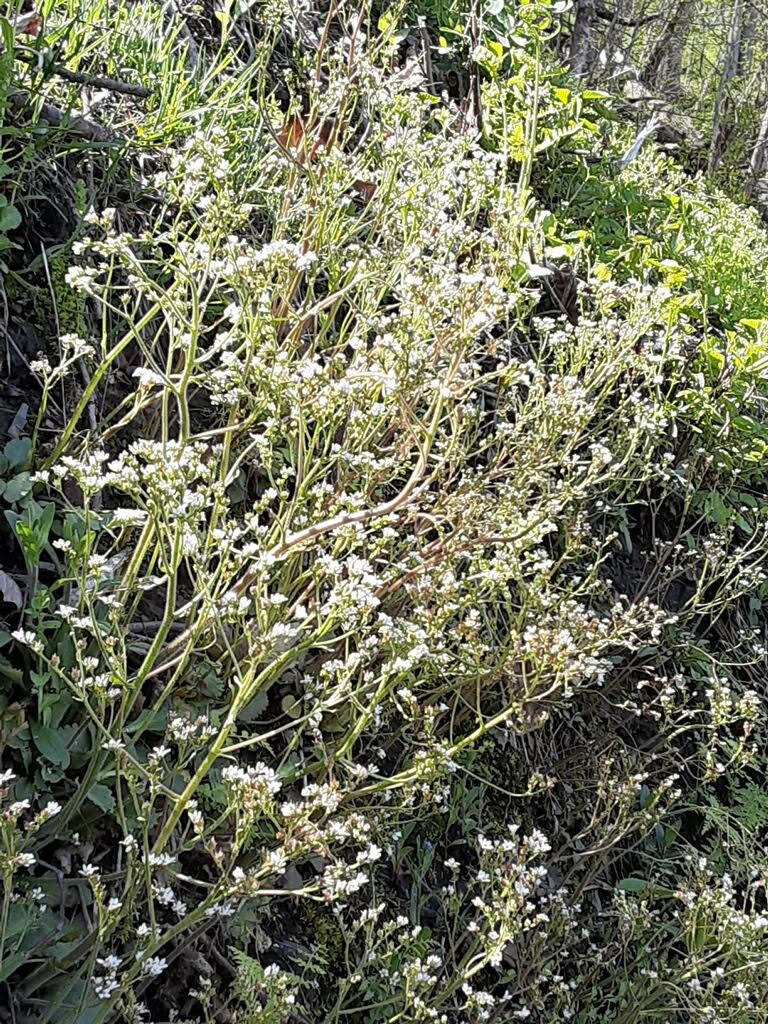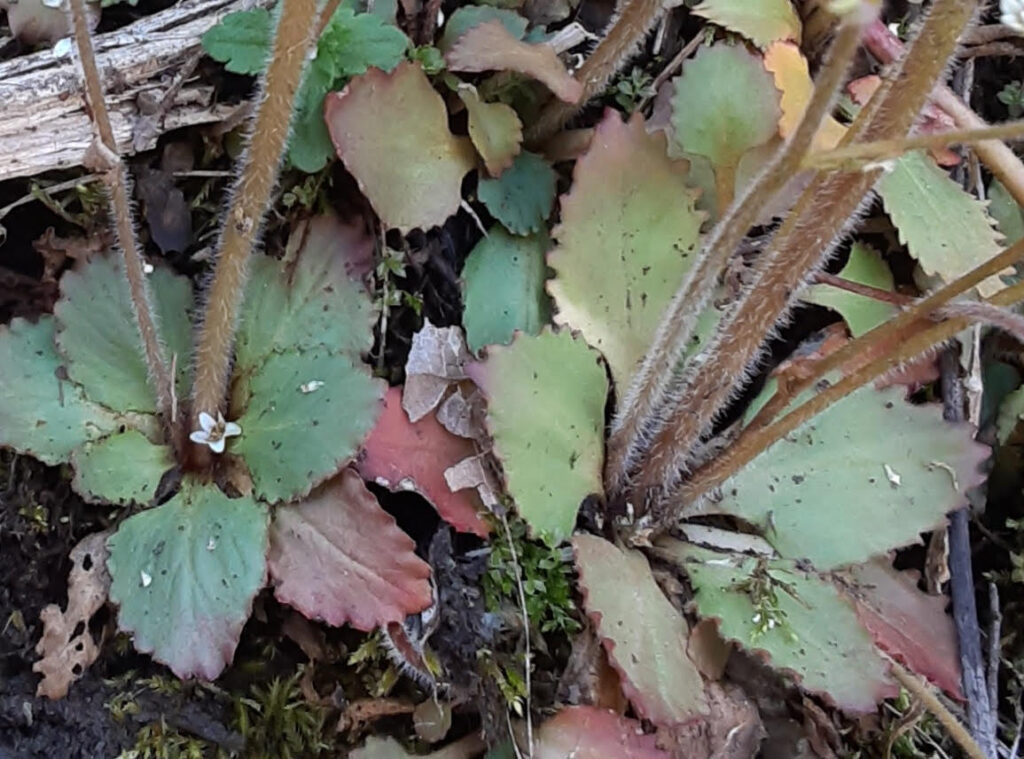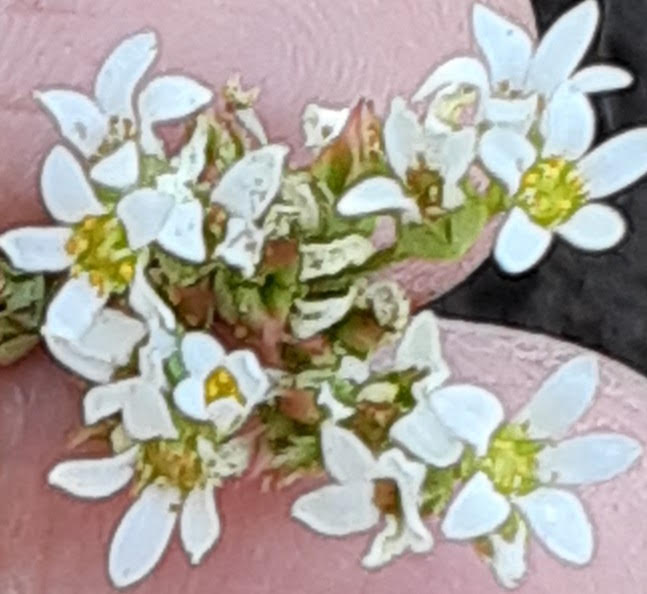By, Susan Sprout
On spring hikes near shaded banks of shale rocks, I like to look for Early Saxifrage, a member of the Saxifrage family. Its appearance in the crevices of rocks helps me remember the unusual name of Saxifrage. It comes from Latin saxum (rock) and frangere (to break) – ” rock breaker”. Because of this, early herbalists used it for treating kidney stones and bladder gravel. I suspect nature’s freeze/thaw cycle should get most of the credit for breaking up most of the cliff rocks around here!

This interesting plant starts blooming when only three inches tall and continues an upward surge until it’s a foot high. Sometimes growing in patches, they wave back and forth in the breeze, especially after their tight flower clusters begin to loosen up and push apart. They appear rather top heavy. I had difficulty getting them to stand still for a group picture. Their stems are straight…and hairy! That’s actually a useful identification point. You don’t even need a magnifier. Some say it is to hinder ground insects from crawling up get nectar. Bees and other flying insects may offer better prospects for cross-pollination.

Saxifrage leaves are oval-shaped with scalloped edges that form a basal rosette. They don’t grow up the flower stem. The white flowers are about one-quarter inch wide. The plant has deeply penetrating taproots with wiry root systems. After fertilization, a one-inch fruit capsule forms and turns from green to lavender or purple, and then splits to release the tiny black seeds. Early Saxifrage is native to eastern and central North America and grows from Ontario to Georgia as a perennial. There are more than 580 species in the Saxifrage Family worldwide which occur mainly in cooler regions of the Northern Hemisphere.


